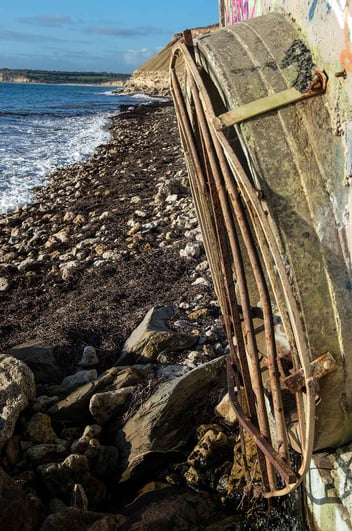Catchment health initiative joins 2032 Olympics sustainability momentum

Brisbane is set to host the Olympic and Paralympic Games in 2032, and the Queensland Government’s pledge to facilitate the global supporting event within a net zero region has catalysed a wave of sustainability efforts and investments.
To make the most of this momentum, a group of leading universities and water organisations has embarked on a new initiative – Green and Blue by ‘32 – to support the health of South East Queensland (SEQ) catchments and waterways.
Green and Blue by ’32 brings together Griffith University‘s Australian Rivers Institute and the International WaterCentre, the Queensland Water Modelling Network, River Basin Management Society, the Moreton Bay Foundation, Stormwater Queensland, Australian Institute of Landscape Architects, Stormwater Australia, the Green Infrastructure Research Labs/Cities Research Institute, Flood Community of Practice and Engineers Australia.
Informed by science, economics and practice, and guided by Indigenous Knowledge and values, the initiative’s goal is to accelerate efforts to restore SEQ’s diverse landscapes, while protecting environmental, social, cultural and economic values.
Director of the Australian Rivers Institute, Professor David Hamilton said the work involved in achieving these outcomes is complex and requires interdisciplinary collaboration.
“There are many different elements that need to come together. This includes things like catchment restoration, urban planning, and being able to build and develop resilience under a changing climate,” he said.
“One of the key motivations for us has been that the synergies we need are currently lacking.
“The 2021 State of the Environment report identified that there are a whole lot of really good initiatives taking place around stream health, water quality, biodiversity and habitat, carbon credits, and so on. But the issue is these efforts are largely disconnected.
“The investments are not being well targeted to be able to address catchment resilience in a much more coherent way.”
Hamilton said a coherent strategy is needed to be able to link everything together, including water, built infrastructure, wastewater treatment, and the restoration of headwater catchments, which is where it all really starts.
“The catchment is a sentinel, and its health reflects the net effect of basic human activities that are occurring within it. If that sentinel is good and healthy, then we've got the ability to support human populations and biodiversity and the benefit from the high quality of water resources,” he said.
Crunching numbers
Aside from achieving more resilient and healthy catchments and communities, Hamilton said one of the biggest benefits of working more synergistically across multiple target areas is to achieve cost-effective outcomes.
“A lot of catchment health projects are incentivised. Organisations are given money to do a whole range of different projects. What's not fully appreciated is that a lot of this work can be aligned with other goals, too, including water quality,” he said.
“There's been a lot of talk about some of the market opportunities in environmental accounting around Australia recently. There are things like carbon credits, but there are also new and emerging market opportunities around biodiversity and natural capital.
“Within this context, we can start to ask whether we can offset or delay some of the investments being made by going up into the catchment where we can get major improvements for much less cost.”
Hamilton said that in many ways, and just like us, catchments have a tipping point in terms of being able to recover from degradation, pointing to an urgent need to start valuing ecosystems differently.
“Once it goes beyond the tipping point, then catchment health can decline quite rapidly, and it's very hard to restore health and build the natural capital that may have existed previously,” he said.
“Often, when we are looking at restoring these systems, we're not counting the cost of what it would take to fix the system if it were to become more degraded, or collapse completely. People look at the cost of restoring catchments after floods or droughts and furrow their brow.
“But the cost can’t really be compared to the economic and social cost of leaving the ecosystem to degrade, and the loss of that natural asset. This is a very relevant issue because we know that we need to build resilience into these systems if they are to withstand the extremes of climate change.”
Leaning into opportunity
Despite the complexity involved in creating and implementing works that produce benefits across the spectrum of catchment health issues, Hamilton said the emerging natural capital market heralds big opportunities that need to be leveraged quickly.
“Let’s say someone wants to go and restore some koala habitat. Now, what about if they could get credits for the sediment and nutrients that they help keep out of waterways as a result of that work, as well?” he said.
“As we restore these catchments, we’re also reducing the potential for pathogens. We’re reducing the amount of treatment we need to do - catchments are very important barriers. They're the first barrier in terms of a water treatment process, but do we value them this way?”
Hamilton said considering alternative sources of water for homes and industry is involved in revaluing natural ecosystems, as well.
“We have to look at alternatives to surface water sources because these will diminish in the future with climate change. One of those alternatives is purified recycled water,” he said.
“Brisbane has the technological capability to recycle its water now, which is not fully realised. There is also desalination. But there are energy and cost implications involved in these options. These alternative water sources are going to be several times more expensive than utilising surface water sources.”
To navigate the transitions and compromises involved in taking a whole-of-system approach to catchment health, Hamilton said it will be crucial to apply learnings from across different industries and community groups, which is what Green and Blue by ‘32 is all about.
“We need to be learning from Traditional Owners. We need to be connecting urban planners to people doing restoration work. We need different perspectives and sets of knowledge to come together to get this right,” he said.
“Let's not just count the benefits of a single objective. Let's count the benefits that can accrue across multiple opportunities. It's about broadening the lens to be able to effectively realise the benefits of what would normally be a single objective action.
“Doing this will synergise people across the landscape to co- create restoration opportunities.”


